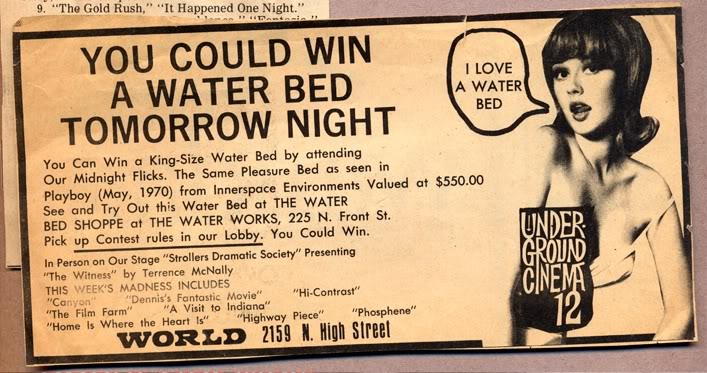Retro Rewind: The Ebb & Flow of Waterbeds
The mysterious waterbed is a phantom mattress of our bedroom interior designs past. Who created it? Why was it created? And why did it leave our mainstream mattress dreams?

Who created the waterbed?
As far back as the early 1800’s, Dr. Neil Arnot created a “hydrostatic bed” for people who were bed-ridden do to one form of illness or another. Bedsores become a problem for anyone confined to their bed, the waterbed was designed to help prevent bedsores. The first design consisted of a bath filled with warm water and topped with a sealed layer of rubber to prevent leaks.
Famous science-fiction writer Robert Heinlein also thought of the idea before it was commercialized. He described it in detail, due to his experience being bedridden from tuberculosis, in one of his novels but never physically created it.
In the late 1960’s, a design student, Charlie Hall wrote his thesis on a similar bed design, after experimenting with other fillers like Jell-O and cornstarch. Enthusiasm for this style of bed started to catch wind, and along with the invention of vinyl, it was the perfect time to turn this waterbed idea into a reality. The popularity truly soared by the mid to late 1980’s.
Why was the waterbed created?
Both Dr. Neil Arnot and Robert Heinlein, conceptualized and conceived the waterbed for helping bedridden patients and those in need of finding an alternative to prevent bedsores. However, by the time it was actualized in surplus, it was not marketed towards bedridden patients.
Surprisingly, it was marketed as erotic and sexual for enjoying more than sleep as one of the many pleasures it will offer its buyers. In fact, celebrities such as Hugh Hefner and members of Jefferson Airplane purchased waterbeds from Hall, solidifying its name as a good time mattress for those with a healthy libido and a swinging sexual appetite.
By 1971, the waterbed was being sold in department stores shifting it into the realm of one of many mainstream mattress designs. Like many new products sold before the internet and social media era, new designs took time to reach the mainstream marketplace. It wasn’t until 1987, “more than one out of five mattresses purchased in the U.S. were waterbeds.”
Where did the waterbed go?
They never fully left. In fact, waterbeds still exist. Today, you can purchase your very own modern waterbed. However, there are several reasons the popular 1980’s designed waterbed left the mainstream world of mattresses. To make it point blank, they were a hassle.
Waterbeds were extremely heavy and installing one required running a hose into your bedroom. If you wanted to move your waterbed, you would need an electric pump or a device to remove the water from it. Other issues such as growing algae, unless a disinfectant was added, could develop. There were also a couple accounts of waterbeds “springing leaks” flooding bedrooms and on the most tragic side, parents allowing their infants to sleep on the waterbed, leading to death due to suffocation. There were even apartment complexes and other housing developments that banned waterbeds altogether.
Modern waterbeds are built differently than the 1980’s predecessors. Some are “soft-sided,” and “waveless” waterbeds. Water-filled pouches and coils insulated by foam separate the water into multiple compartments. Some are more supportive and less fluid than before.
Novelty or Intent?
The original intent of a waterbed, to prevent infections and bedsores for bedridden patients, remains the primary use of waterbeds today. The distribution of weight and your bodies natural movements allow for less strain on body parts and help to balance pressure.
The new market for waterbeds is finding its customer base in farmers and livestock owners. Cow-sized waterbeds used primarily for cows, instead of the standard wood chip cow bed, is making a splash in this industry.
Don’t have a cow, if you want a waterbed!
No reason to allow its moo-moo marketplace deter you from buying an updated modern waterbed. There are mattress stores devoted to preserving the human-sized waterbed for anyone who might benefit from a hydro-therapeutic alternative to nighttime aches and pains.